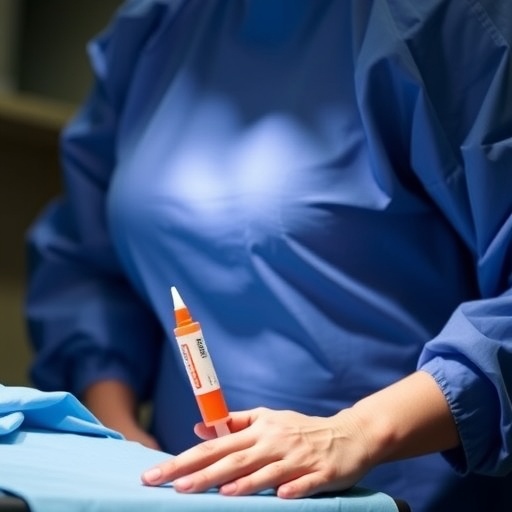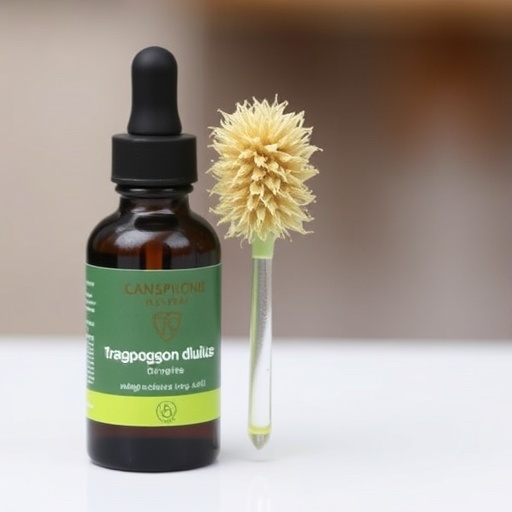Postoperative complications remain a significant challenge in surgical oncology, particularly for patients undergoing axillary lymphadenectomy as part of breast cancer treatment. Among these complications, seroma formation and prolonged lymphatic fluid leakage—the latter termed lymphorrhea—are prevalent issues that adversely affect patient recovery. These complications not only delay wound healing but also postpone the critical initiation of adjuvant therapies such as chemotherapy and radiation, thereby potentially diminishing oncologic outcomes.
In an innovative advancement presented by researchers at Sechenov University, a novel application of a latex-based tissue adhesive (LTA) has been explored as an intraoperative intervention to mitigate these postoperative complications. The study, published in the Chinese Journal of Plastic and Reconstructive Surgery, presents compelling evidence that this adhesive technology markedly reduces lymphatic fluid exudation following axillary dissection.
Axillary lymphadenectomy traditionally employs the use of silicone vacuum drains to evacuate lymphatic fluid accumulation, a standard aimed at preventing seroma formation. However, the drainage system itself can be associated with patient discomfort, prolonged hospital stays, and increased risks of infection. The latex-based tissue adhesive offers a departure from this reliance on drains, facilitating lymphatic sealing via a biocompatible yet robust polymerization process that occurs rapidly during surgery.
The prospective observational study enrolled 65 patients with stage IIb to III breast cancer who required axillary lymph node dissection. Participants were randomized into two cohorts: one receiving the LTA application without postoperative drain placement and a control group managed conventionally with silicone vacuum drains. The technical appeal of this tissue adhesive lies not only in its biocompatibility but also in its economic feasibility, offering an affordable alternative to more expensive biological adhesives that are currently in use.
Data collected over a 10-day postoperative period revealed a striking reduction in daily lymphatic fluid volume among patients treated with the latex adhesive. Specifically, the exudate volume in the LTA group was reduced by 84.8% relative to the control group, with an average fluid output of 8.2 mL compared to 54.1 mL in the drain-managed cohort. This dramatic decrease underscores the adhesive’s efficacy in achieving lymphostasis and minimizing seroma risk.
An equally impactful finding was the reduction in hospital stay lengths. Patients treated with LTA were discharged significantly earlier, typically within 8 to 10 days, compared with 14 to 16 days in the control group. Early discharge not only benefits patient quality of life but also reduces healthcare resource utilization, underlining the practical benefits of this surgical adjunct.
Another pertinent outcome was the notable decrease in the need for repeat aspiration procedures, which can be both invasive and distressing for patients. This reduction aligns with the hypothesis that the adhesive forms a consistent and durable seal over lymphatic vessels disrupted during lymphadenectomy, thereby obviating the collection of fluid post-surgically.
Importantly, the study reported no incidence of infections, allergic reactions, or other complications attributable to the tissue adhesive, despite the absence of suction drainage. This safety profile is critical, as it supports the idea that LTA can be integrated into surgical protocols without introducing additional risks.
The mechanism by which the latex-based adhesive exerts its effect involves rapid polymerization that adheres to tissue surfaces, effectively sealing lymphatic channels and promoting hemostasis. This physical barrier prevents lymph leak into the axillary space, which traditionally would accumulate and form seromas.
The implications of this research extend beyond immediate surgical outcomes. By expediting patient recovery and reducing complications, the use of LTA facilitates a more timely transition to adjuvant therapies. For breast cancer patients, where treatment windows can be narrow and delays detrimental, this benefit could translate into improved long-term survival and oncologic prognoses.
The simplicity of the application procedure further enhances the clinical appeal of the tissue adhesive. Unlike some biological adhesives requiring complex preparation or those associated with high costs, this latex-based formula is straightforward to implement and polymerizes quickly, streamlining operating room efficiency.
While biological adhesives have been evaluated for similar purposes, their cost and variable biocompatibility have prevented widespread clinical adoption. The latex-based alternative presents a low-cost, biocompatible option that combines effectiveness with accessibility—parameters essential for global clinical applicability.
The study’s authors advocate that tissue adhesives like LTA could either replace conventional drainage systems or be used as adjuncts, particularly in high-risk patients or those for whom drains pose considerable discomfort or complications. This paradigm shift could revolutionize postoperative management strategies in oncologic surgery.
Corresponding author Dr. Viktoriia Nebezheva emphasizes, “Our findings signify that the application of tissue adhesive not only reduces postoperative lymphatic output but also accelerates overall recovery without increasing complication rates. This advancement has significant implications for improving patient quality of life and ensuring timely delivery of subsequent cancer therapies.”
In summary, the integration of a latex-based tissue adhesive in axillary lymphadenectomy showcases a significant advancement in surgical oncology by addressing the persistent problem of postoperative lymphorrhea and seroma formation. As the global medical community continues to seek cost-effective, safe, and efficient innovations, this adhesive technology heralds a promising shift in postoperative care protocols for breast cancer patients.
Subject of Research: People
Article Title: Prevention of postoperative complications in axillary lymphadenectomy through adhesive application.
Web References: http://dx.doi.org/10.1016/j.cjprs.2025.08.004
Image Credits: Authors of the study, Sechenov University
Keywords: Health and medicine, Cancer, Breast cancer, Surgery, Oncology
Tags: advancing surgical oncology techniquesalternatives to silicone vacuum drainsaxillary dissection and patient comfortbenefits of latex-based tissue adhesivebiocompatible surgical materialsenhancing recovery in breast cancer patientsimpact of adhesive on patient outcomesinnovative tissue adhesive technologylymphatic fluid leakage managementpostoperative complications in axillary lymphadenectomyreducing seroma formation in cancer patientssurgical glue for breast cancer surgery





